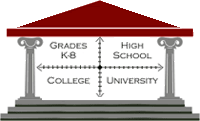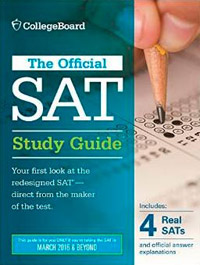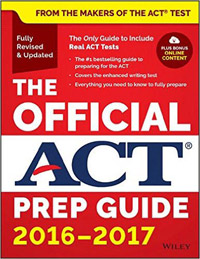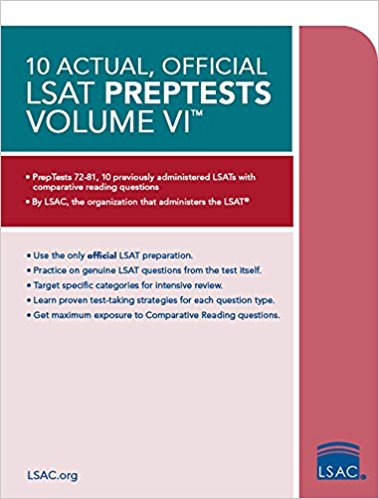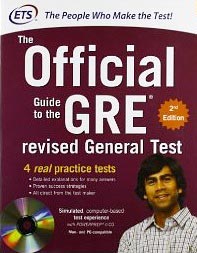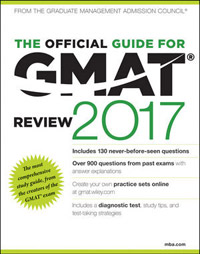|

So, you’re taking the GRE soon. You’ve studied, practiced and repeated, and taken plenty of diagnostic tests. Now it’s time for some last-minute reminders and tips.
You should know where your test center is by now, as well as your test date and the time of day you are taking the test. If you get a chance, then I would suggest that you drive by the test center in person, just to eliminate any unknowns or traffic variables. The GRE is primarily offered at Prometric test centers, which are all very similar. You should be aware that not everyone in the test center will be taking the GRE, however: Prometric offers a variety of computer tests at its locations.
Anyway, regardless of where you are taking the GRE, your test center is most likely located in a nondescript office park. In most cases, the GRE is offered on weekdays at either 8:30 am or 1 pm. I’m not exactly a morning person, so I tend to be in the 1 pm crowd, but it’s all up to your personal preference.
Pro tip: I’ve taken the GRE many times — 6 times to be exact — and have even scored a perfect 340. I still take the exam regularly to keep myself sharp and to stay up-to-date with any test changes. One time, I arrived at Prometric and thought that I had forgotten my ID. The receptionist told me that even though my test start time was 1 pm, that I could start as late as 1:30. I can’t promise that this will be the case with every test center, but it’s comforting for those of you who are worried about making it to the center on time for any reason.
Alternatively, you can arrive early for your test and start taking it before the scheduled start time. ETS recommends that you arrive 30 minutes early, but if you’re ready to go after 5 minutes or so, then they will often let you begin early, since other test-takers will be there at the office taking tests all day long. I would recommend that you find the bathroom before the test begins, so that you don’t waste any precious test time on restroom runs.
Don’t forget to bring an acceptable photo ID, since you will need it at the test center: no ID, no test. When you arrive, the receptionist will give you a locker key and ask you to empty your pockets into the locker. You will keep your ID in your pocket, however, as you will need it to check in and out of the test. You will be provided with a pencil and as much scratch paper as you need. To request more paper during the test, simply raise your hand, and the proctor will collect your previous scratch booklet and hand you a fresh one.
I would still recommend bringing a water bottle, but of course you’ll have to drink it before you put your stuff in your locker. Or, during your break you can come out, open your locker, and drink your water and/or eat whatever snack food you have brought. I recommend something high-calorie and easy to eat such as a Clif Bar. If you forget your water, don’t worry: there is a water cooler there.
Since ETS (the maker of the GRE) forbids using your cell phone during the test, I would recommend that you simply leave your phone in your car, to eliminate the chance of your using it accidentally and thus having your score cancelled. That would be tragic, and a big waste of time and money.
Some tips for the actual test:
-The issue essay is an opinion piece. Consider the issue, take a side, then back it up using a variety of reasons, examples, and deep analysis. Write a lot, organize your thoughts well, and make sure to back up your claims with detailed examples. Be insightful, nuanced, complex and balanced.
-The argument essay is your opportunity to be the CEO of your own corporation. In other words, you are the boss, and you are given a chance to evaluate the argument/presentation made by your employee. Instead of attacking the argument outright, make it clear that there is not yet enough information to make a clear decision (after all, this is your thesis every single time!). You might believe him, and you might not. But either way you will have to defend your positions and explain what extra information is needed, and how your decisions would depend on the results of that information.
-Remember that the GRE is an section-level adaptive test, which means that the exam adjusts its level of overall difficulty depending on your performance. It determines the difficulty level of the second section (easy, medium, or hard) based on your performance on the first (non-experimental) section of that type.
-Don’t forget that the actual GRE contains an extra “experimental” section that doesn’t count toward your score. It could be verbal, or it could be math, and you don’t know what section it’s going to be. So the real thing is going to feel a bit longer, and a bit less certain, than the Powerprep practice tests.
-After the 2 essays and the 3rd section of the CAT (the 2nd multiple-choice section--either verbal or math), you will have the option to take a 10-minute break. Take the break! It’s nice to get outside, stretch your legs, drink some water and/or go to the bathroom.
VERBAL TIPS (quick and dirty version)
-The text completion questions with 3 blanks are much harder to solve than the ones with one or two blanks. Don’t spend as much time on them for this reason—you want to allocate your time to that which you can get right.
-On the reading passages, don’t be fooled by language and vocabulary in the answers that is similar to the text. Look for similar ideas and concepts instead.
-The GRE verbal section is heavy on vocabulary. Consider studying as much vocab as you can. For that purpose, check out the free GRE e-book that I co-authored, GRE Vocab Capacity.
-Don’t. Make. Assumptions. Let the precise text of the passages, and the answer choices, determine your answer. Instead of focusing on which answers “sound right,” try to stay as neutral as you can and focus more on eliminating incorrect answers, since the vast majority of answers are wrong.
MATH TIPS (quick and dirty version)
-On-screen calculator: yes, the new version of the GRE allows you to use an on-screen calculator. However, it is a basic, four-function calculator, and it’s not even an actual calculator that you can keep on your desk. So, number one, don’t overuse it. You should be comfortable operating without a calculator, because using the calculator tends to slow you down in general. Use it for double-checking your answer instead of determining your answer, for example…that way you can see your actual work on your scratch paper.
Number two, you should practice using the keypad on the right of your keyboard (hopefully your computer has a full keyboard) to control your calculator. It’s much easier (and faster) to control it that way than it is to use the calculator with mouse clicks. Using the mouse to control the on-screen calculator tends to be frustratingly slow.
-By the time you take the test, you should be very comfortable with the following:
-algebra: fractions, percents, converting from percents to fractions to degrees and vice versa, exponents, negative exponents, fractional exponents, patterns and dividing with remainder, slopes and equations of lines, radicals, simultaneous equations, quadratic equations, inequalities, absolute values, ratios
-statistics: range, mean, median, mode, and standard deviation (understanding the concept is much more important than the actual equation)
-geometry: lines, triangles, circles, rectangles, cubes, rectangular solids, area, circumference, arcs.
Quantitative Comparison Tips (Math)
"Quant comp" questions can be tricky at first, until you get the hang of them.
Here’s how I look at them:
A = Quantity A is always greater than Quantity B
B = Quantity B is always greater than Quantity A
C = Quantities A and B are always equal
D = More than one of the top three (A/B/C) could be true.
Notice the difference between what the GRE tells us, which is that D stands for “it cannot be determined” and the way that I put it. They basically mean the same thing, but in my experience it’s easier to think of D as more than one of A, B, and C.
So when I’m doing these questions, I try out some numbers (just the easiest numbers I can think of that fit the requirements of the question/equation) and I get an answer. The answer I get is either going to be A, B, or C. Then, I mark the answer that I got (let’s say A, for example) and try to make either of the remaining two (B and C) true. If I can, then the answer is D. If I can’t, then it’s my original answer (A).
During that second step, when you are trying to get an “additional answer” to test whether or not the answer is D, it can be helpful to have a go-to list of “weird numbers” to try to plug in to get different results.
I put the numbers in the order of their ease of use in calculations.
1) 0 and 1. Zero is super easy to plug in and often creates exceptions.
2) Negative Numbers.
3) Fractions
4) Big and Small
Now, keep in mind that plugging in numbers is not always the best strategy. Sometimes using algebra is much more effective. It all depends on the question.
After the Test is Over
When the test ends, you will have the option to either keep or cancel your score. Since it is a computer adaptive test, you will receive your Math and Verbal scores right away, but you will have to wait 72 hours for your essay (AW) score.
Unless you feel that you totally bombed your test, I would recommend viewing your GRE score. You may have done better than you thought. If not, then don’t fret: most students score higher the second time they take the GRE.
Besides, with the GRE's new(ish) ScoreSelect option, you can pick and choose which scores get sent to the Universities / Graduate Programs of your choice, which means that you don't have to be afraid of a poor score.
If you have more time to prepare, then you may also want to read my GRE Action Plan and GRE Informational Document.
Good luck!
-----
copyright 2002-22 Brian R. McElroy
Founder and President, McElroy Tutoring Inc.
email: mcelroy@post.harvard.edu
Toll-Free: 1-866-584-TUTOR (8886), x 4
Direct (Call or Text): 619-889-2935
Back to Blog Home
|

